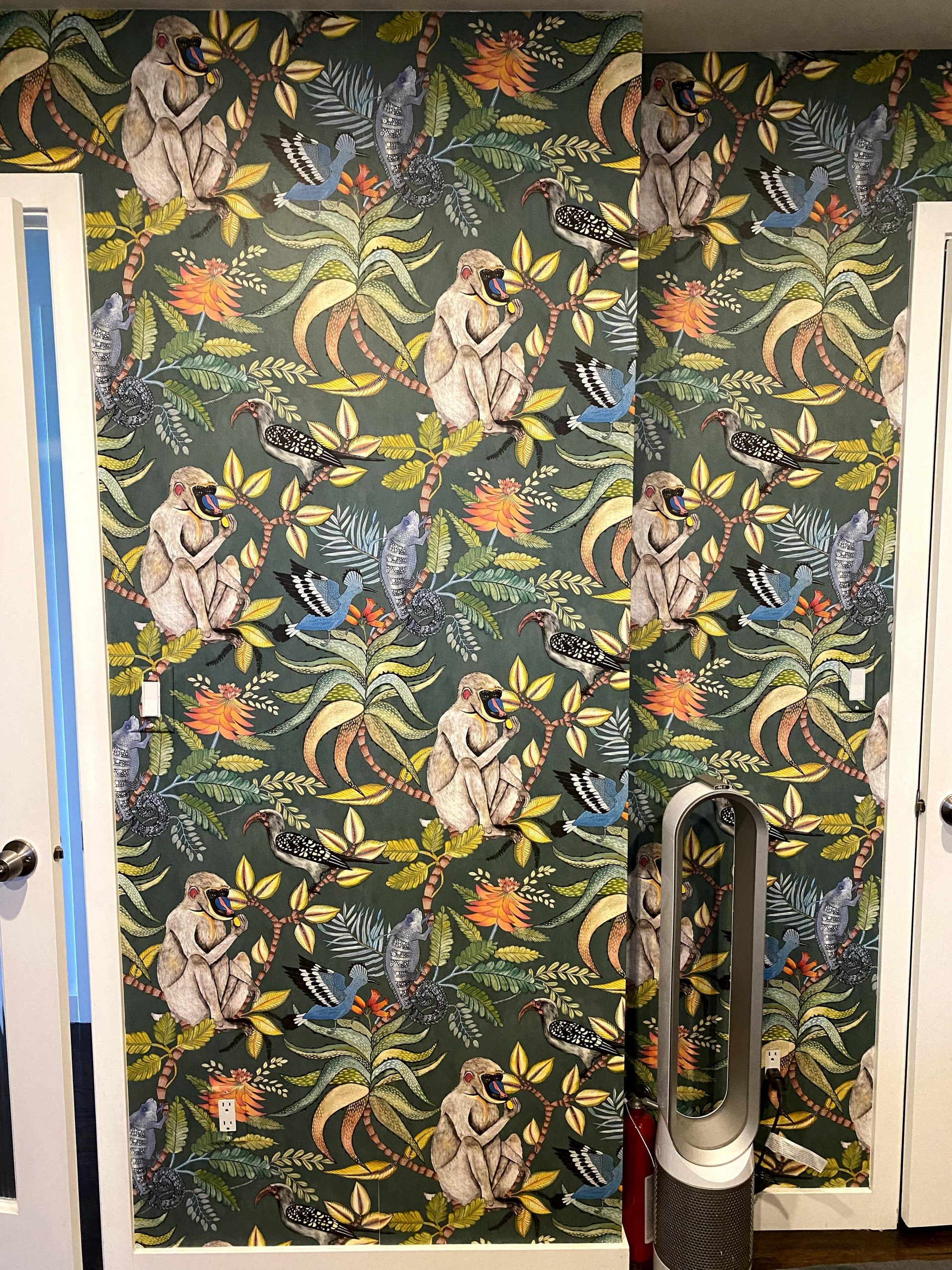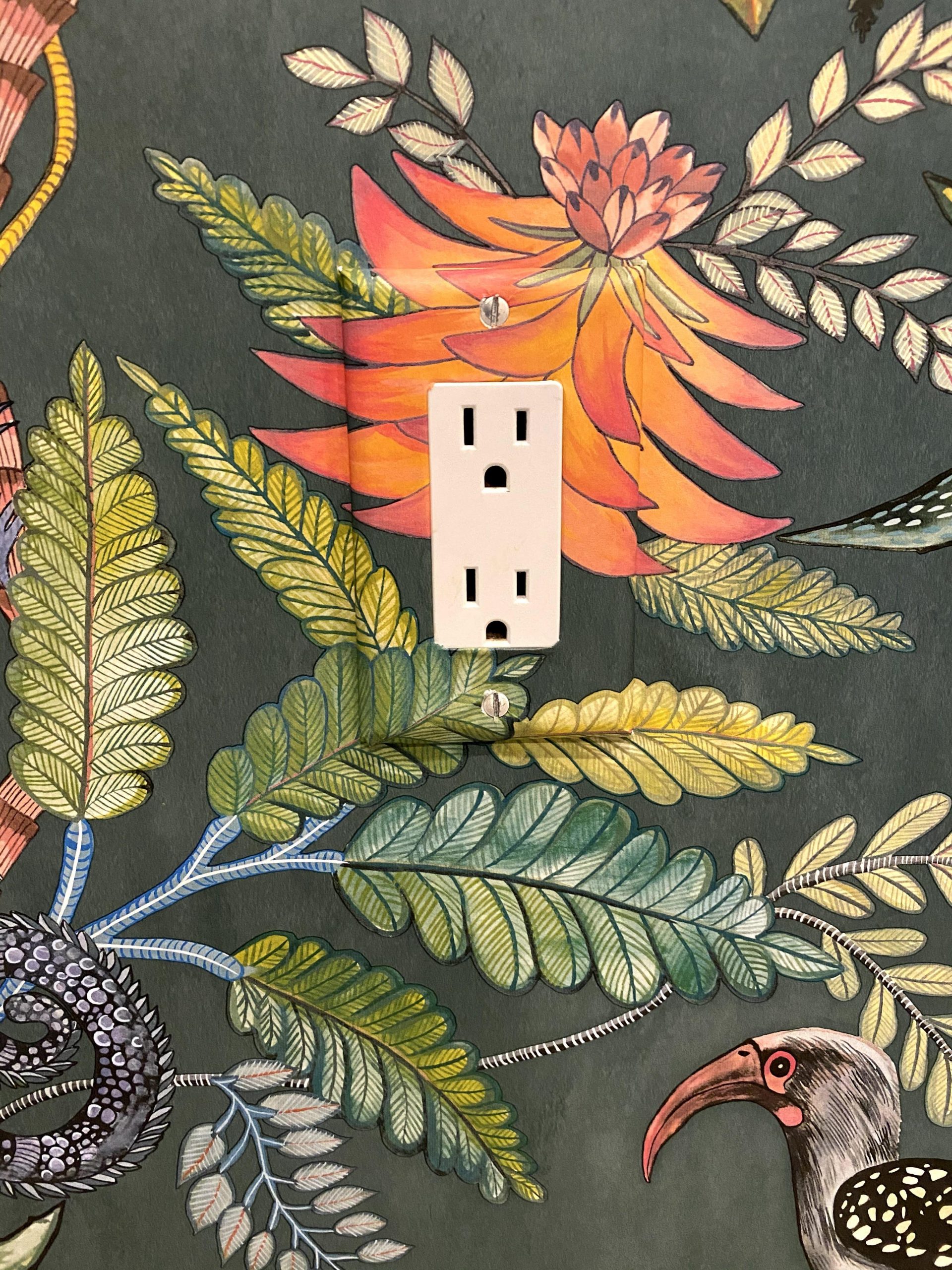If you know me, you know that I love to make bold, unique design statements in my life, especially in my home. The past few years have seen a huge increase in wallpaper designs, creativity, and availability – so you may not be surprised to hear that I’ve become slightly obsessed with wild wallpaper! Whether used for an accent wall, a whole room, or sporadically throughout the home to tie spaces together, adding wallpaper can change your home’s whole vibe relatively quickly and easily.
My first solo wallpapering project was an accent wall in a guest bathroom, with this retro luxe banana-leaf printed paper. It’s thick, heavy, foil paper – which meant it was tougher to bend into corners, and a bit harder to make clean cuts with my knife. But there’s gorgeous dimensionality to the design with the metallic foil!

My second project was this jungle pattern in my bedroom – now I go to sleep each night feeling like Max in “Where the Wild Things Are…” It’s regular paper, and was much easier to work with than the foil. I had both inside and outside corners to navigate, and many switchplates to match (which turned out to be my favorite, perfectionistic part!).


Next up: 60’s mermaids with martinis, for the basement bathroom currently being remodeled… (I think my mom thinks I’ve gone off the deep end…)

Many people are intimidated by wallpapering – I actually find it very zen-like and rewarding (much more fun than painting walls), and if you’re in the Seattle area, I’ll happily come help you get your project started! Here are a few of my tips and learnings:
- Always buy extra! Use online wallpaper calculators configured with specs for your particular roll – it should give you the option to add 10% extra, just do it!
- Related to that, always save ALL your scraps until you’re completely finished, no matter what. You may need to piece together a patch, fill a strip behind a doorway, or cover a switchplate.
- You’ll see the “drop” measurement noted for each wallpaper pattern – it’s basically the length of the pattern repeat. A larger drop isn’t harder to work with, it just means you need to buy more of it, and that you’ll also probably have more waste.
- Use a SHARP knife for trimming on the wall – the box cutters with snap-off blades are great. I snap off the used blade after each strip of wallpaper applied (basically 2-3 cuts). It feels wasteful at first, but it improved my cuts 100% when I started doing this.
- Watch videos from pros to get familiar with techniques for inside/outside corners, plumb lines, and selecting your start/end locations in the room. Also – do not assume your walls are plumb.
- It’s definitely easier with two people than solo – call me if you need an extra set of hands!
 Facebook
Facebook
 X
X
 Pinterest
Pinterest
 Copy Link
Copy Link